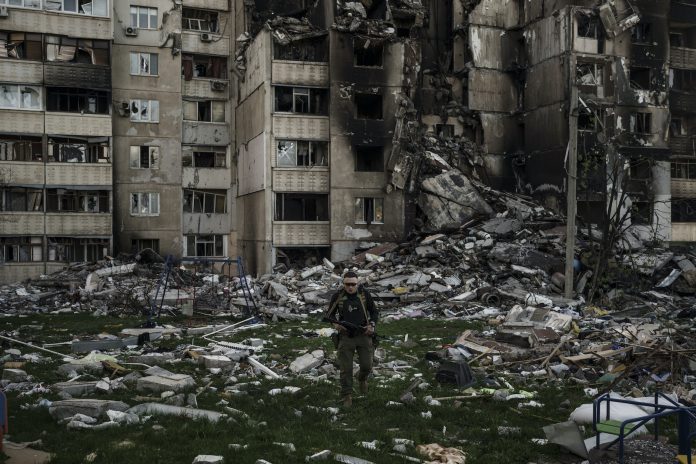In the early hours of the Ukraine war, military analysts from Europe to the US struggled to determine the war’s outcome. Ukraine was much smaller using stockpiled equipment that was mostly from the Cold War era. The Russian army at the time was assumed to be much larger and far superior to the defending force, and Russia had not even reached full mobilization. A year later and many of the strategies employed by both sides have been heavily altered or changed completely.
One of the most critical components of the war is aerial dominance. Controlling the airspace over one’s defenses is valuable, but so is owning the airspace over offensive objectives. As of April 2023, neither side has control of the air. Both Ukrainian and Russian pilots are forced to operate at a limited capacity as targets outside of the frontline are generally heavily defended with air defenses. Although fighter jets are important to the war effort, Ukraine has learned how to effectively employ helicopters across the front lines to accomplish some things that planes cannot.
Ukrainian attack helicopters are mainly the Soviet era Mi-24’s. (pictured below) These aircraft have been crucial in providing support for troops, completing “hit and run” attacks on Russian personnel, and being an overall nuisance to Russian soldiers. These helicopters have provided Ukraine with speed and maneuverability, making it one of Ukraine’s most effective aerial weapons.
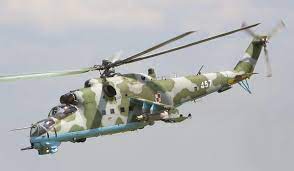
Although aerial dominance is important, so is the ability to capture and hold cities and defenses. The ground war for Ukraine has been violent, and bloody, and there has been multiple advances and just as many retreats. Artillery has been the common way of forcing enemies out of held territory, or softening the resistance before an assault. Urban areas have seen the worst of the artillery bombardments and in some cases parts of cities have been totally destroyed.
Urban combat includes a series of barrages followed by an assault from offensive elements that may result in the area of a city block or a singular building being taken. No two battlegrounds are the same. Each city holds a different challenge for attacker and defender alike. One of the specific challenges for both has been engineering. According to the modern war institute, both sides have had to flood rivers, narrow streets using debris, and make it confusing to navigate for opposing forces. To supplement the engineering efforts, is the combined arms exercises.
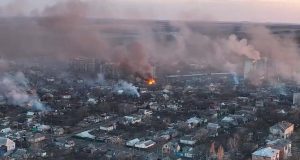
Combined arms is defined as the use of different “arms” of the military to effectively destroy an enemy. Ukraine has proven that combined arms exercises are a good use of resources as Ukraine has been able to batter Russian forces with quick strikes from the air followed by an assault from the ground with armored support. Russia has done poorly in this field, leading to a large loss of armor, airpower, and manpower.
At the beginning of the war, there was a discussion coming from the frontlines that asked the question about the usefulness of tanks on the modern battlefield. This is another lesson that was quickly learned after a few weeks of fighting. Tanks are still very effective in advancing a front line or defending from an assault, but they must be employed effectively to be able to reach their full potential. Russian forces were sending long lines of tanks into city streets or traversing open fields with little to no ground, air, or logistical support. Part of this was done for speed, part of it was poor planning, but the results were disastrous.
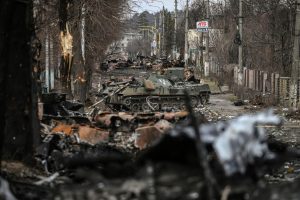
Videos of Russian armor being captured or destroyed was widespread in the early weeks of the attack. Ukrainian citizens were showing videos of Russian armor that had been abandoned due to running out of fuel or being lost deep in Ukrainian territory. This is one of the ultimate failures of the early days of the war. It is not entirely fair to judge Russian defeat off of poor planning. Ukraine had a built in advantage of knowing the territory they are fighting in. Counterattacks with air support could knock out an entire column in a short amount of time.
Combined arms attacks are centered on logistical support. Units need resupplies of weapons and ammo regardless of whether they are defending or attacking. Russia has done this well as it uses cities with railways to quickly transport personnel and supply between regional frontlines. Ukraine’s effectiveness to attack these depots depends primarily on proximity to the front line and the knowledge of where the supplies are hidden.
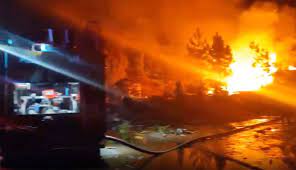
Regardless, Ukraine has proven itself effective at targeting enemy supply lines while defending its own. Earlier this year, Reuters spoke to Ukrainian military spokesperson Serhiy Cherevaty who said that they secured their Eastern supply line while simultaneously attacking Russia’s.
Of course, the war is constantly changing and there are frequently going to be situations that both armies must adapt to. When the war in Ukraine began, the world was unsure of how the Ukrainian military would stack up against a much larger and assumedly better trained Russian military. Although Ukraine shocked everyone in the beginning, wars are long and brutal, and the frontlines are constantly employing new methods to try and defeat their enemy. We have pulled many lessons from this war and everyday provides new insight to the future of war.


